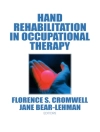This book aims to present a comprehensive classification of hypertensive phenotypes based on underlying target organ involvement. Particular emphasis is placed on review and assessment of clinical presentation, pathophysiologic mechanisms, and possible specific therapeutic options for each hypertension phenotype. Several of these phenotypes are well known and well described in the literature, such as prehypertension, white coat and masked hypertension, isolated systolic hypertension, renovascular hypertension, endocrine hypertension, pediatric hypertension, and gestational hypertension. Other hypertension phenotypes, however, are not widely recognized, being reported only in special reviews; examples include hypertension associated with renal calculus disease and other rarer causes such as Turner syndrome, herbal and medicinal compounds, and pharmacologic agents. A detailed account of the various causes of monogenic hypertension is also included. Finally, a section is devoted to general aspects of hypertension, including the significance of blood pressure indices, the natural course of untreated and treated hypertension, hypertension mechanisms, genetics, and guidelines for blood pressure control.
قائمة المحتويات
Part I: General Aspects.- 1. Introduction: Definition and Classification of Arterial Pressure Phenotypes.- 2. Diagnostic and Prognostic Significance of Blood Pressure Indices.- 3. Role of Circadian Rhythms and Seasonal Variation in BP Levels.- 4. Natural History of Treated and Untreated Hypertension.- Part II: Mechanisms of Hypertension Development.- 5. The Kidneys, Volume and Blood Pressure Regulation, and Hypertension.- 6. Nervous System.- 7. Hormonal Systems.- 8. Vasoactive Peptides.- 9. Endothelial Function.- 10. Genetics of Blood Pressure and Hypertension.- Part III: Hypertension Phenotypes: Monogenic Syndromes.- 11. Monogenic Forms of Hypertension.- 12. Arterial Hypertension in Turner Syndrome.- Part IV: Hypertension Phenotypes: The Heart.- 13. Hypertensive Heart Disease.- 14. Perioperative Cardiac Surgery Hypertension.- 15. Hypertension: Supravalvular Aortic Stenosis.- 16. Coarctation of the Aorta.- 17. Atrial Fibrillation and Hypertension: Two Entities That Usually Coexist.- Part V: Hypertension Phenotypes: The Central Nervous System and the Brain.- 18. Sleep Disturbances/Sleep Apnea.- 19. Stress and Hypertension.- 20. Central Nervous System Disorders: Transient Ischemic Attack and Stroke (Ischemic/Hemorrhagic).- Part VI: Hypertension Phenotypes: The Kidney.- 21. Chronic Kidney Disease.- 22. Calculus Renal Disease.- 23. Uric Acid-Hypertension Relationships.- 24. Hypertension in Dialysis Patients: Clinical Edidemiology, Pathogenesis, Diagnosis, and Treatment.- 25. Renovascular Hypertension.- 26. Molecular Pathways in Hypertensive Renal Damage.- 27. Determinants of Hypertensive Renal Disease and Its Progression.- Part VII: Hypertension Phenotypes: Endocrine Causes.- 28. Cushing’s Syndrome and Glucocorticoid Excess.- 29. Primary Aldosteronism and Its Various Scenarios.- 30. Severe Paroxysmal Hypertension (Pseudopheochromocytoma).- 31. Paroxysmal Hypertension: Pheochromocytoma.- 32. Hypertension in Thyroid Disorders.- 33. Primary Hyperparathyroidism.- Part VIII: Special Types of Hypertension.- 34. Phenotypic Changes in the Transition from Prehypertension to Established Hypertension.- 35. White Coat and Masked Hypertension.- 36. Isolated Systolic Hypertension: In the Young and in the Elderly.- 37. Treatment of Resistant Hypertension.- 38. Accelerated / Malignant Hypertension.- 39. Nocturnal Hypertension.- 40. Salt and Hypertension.- 41. Diabetes Mellitus and Hypertension.- 42. Obesity and Metabolic Syndrome Hypertension.- 43. Secondary Hypertension: Infrequently Considered Aspects—Illicit/Recreational Substances, Herbal Remedies, and Drug-Associated Hypertension.- Part IX: Hypertensive Phenotypes: Blood Pressure Disorders of Pregnancy and Pediatric Hypertension.- 44. Hypertensive Disorders of Pregnancy.- 45. Blood Pressure Trends in Children and Adolescents: Predictors of Blood Pressure Elevation in Children and Adolescents.- 46. Hypertension in Children and Adolescents.- Part X: Management and Therapeutic Approaches.- 47. What Is New and What Is Different in Recent Guidelines on Antihypertensive Treatment? Looking Forward to Guidelines Reappraisal.- 48. Place of Invasive Procedures in Blood Pressure Control.- 49. Is Hypertension-Related Target Organ Involvement/Damage Reversible/Preventable?
عن المؤلف
Adel E. Berbari is Professor of Internal Medicine/Physiology at the American University in Beirut, Lebanon. He graduated in 1959, had his residency training in Medicine at the American University of Beirut Medical Center from 1959 to 1963, and then was Research Fellow at the Peter Bent Brigham Hospital (Hypertension Unit), Boston, USA, from 1963 to 1966. He is Board Certified by the European Society of Hypertension as Clinical Hypertension Specialist. His main research interest focus on Hypertension, vascular medicine, and nephrology. He has already published several books with Springer: Cardiorenal Syndrome (2010), Special Issues in Hypertension (2012), Arterial Disorders (2015), all of these co-edited with Prof. Giuseppe Mancia.
Giuseppe Mancia is a Professor Emeritus at the University of Milano-Bicocca and served as Professor of Medicine and Head of the First Division of Medicine at San Gerardo Hospital, Monza, Italy. He is an executive officer of the European Society of Hypertension and Chair of the ESH Educational Committee. Prof. Mancia has served as President of the European Society of Clinical Investigation, of the Italian Society of Hypertension and of the European Society of Hypertension, the International Society of Hypertension, and is a member ‘ex officio’ of the Executive Scientific Council of the American Society of Hypertension, among others. Dr. Mancia’s research interests include pathophysiology, diagnosis and therapy of hypertension, heart failure, coronary and other cardiovascular diseases. His expertise includes ambulatory blood pressure monitoring, neural control of circulation, large artery mechanics, and clinical trials.












